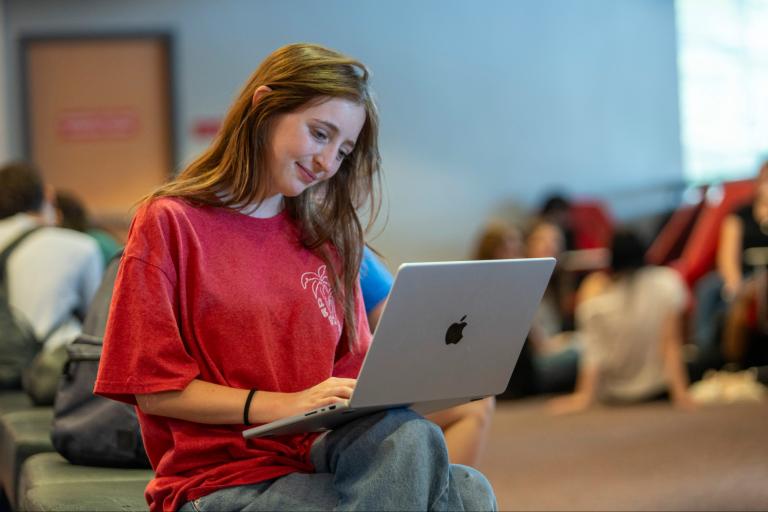Artificial Intelligence, LED Screens, and More in UNLV’s New Advanced Engineering Building
Listen to this article
UNLV’s Advanced Engineering Building (AEB) has officially opened and features new innovative technology here on the university’s campus.
Manager of Classroom Technology Services Frank Alaimo and Associate Director of Network Development and Engineering Matt Kole from UNLV Information Technology, along with their teams, played significant roles in integrating some of these new features within AEB. Alaimo oversaw learning spaces and audio-visual technology, which includes all screens and video-sharing elements seen in AEB, while Kole managed connectivity and network operations to ensure seamless functionality throughout the building.
“This was the first time on campus where we’ve rolled out a project with a large audio-visual system over our network,” Alaimo said. “Having a great team of engineers in the network development and engineering team that helped us along the way made it a painless process.”
Together, the features Alaimo, Kole, and their teams have added to AEB can push the boundaries on how technology can enhance education.
Connecting with AI
Connectivity issues within AEB can be identified in just minutes with the campus’ first use of artificial intelligence (AI) access points.
“These access points can self-identify any network issues occurring inside the building and report those problems back to the network development and engineering team who can then see exactly where an issue needs to be addressed,” said Kole. “With this, AEB stands out as the inaugural building on campus with switching and wireless technologies all seamlessly controlled by an AI assistant.”
With over 50 access points in the three-story, 52,000-square-foot building, the implementation of AI largely reduces the time spent on finding issues and keeps the network within the building running smoothly.
“Our partners at Juniper have graciously provided us access to all licensed AI features for testing. This enables us to use their utility and streamline our administration processes while also enhancing the overall customer experience,” Kole said. “With AI for networking, we anticipate the ability to predict user experiences, dynamically adjust bandwidth, self-correct for maximum uptime, swiftly identify root causes, and deploy virtual network assistants.”
Illuminating Design
AEB is home to many indoor and outdoor LED screens, allowing for important information to be shared with those walking by or for students to display their work in the showcase space.
“The showcase space features a 4K LED wall that will be utilized for various things such as special events, capstone projects, or fundraising for student projects,” Alaimo said. “The flexatorium’s LED wall will provide the ability to show different content for classes and events, while the outdoor wall can be used for promotional videos, advertisements, and more.”
Syncing up Sounds
Projecting the same video and audio onto multiple screens is easy in AEB. With each screen being connected through a network rather than a cable, information can easily be transferred from one screen to another, even in separate rooms.
This is especially useful in spaces like the flexatorium, where events that have reached maximum capacity can still share their presentation with other rooms within the building.
This feature could be seen during the AEB grand opening ceremony on Feb.23, in which video overflow was sent out into adjoining breakout classrooms as guests were able to change what was being shared on certain screens. With this feature, those in separate rooms can see and hear what is being presented from a single room, significantly improving the accessibility for these events.
From AI helping find network issues to high-definition screens that can share information in seconds, AEB implements features such as these that pave the way for a more technologically advanced education at UNLV.

